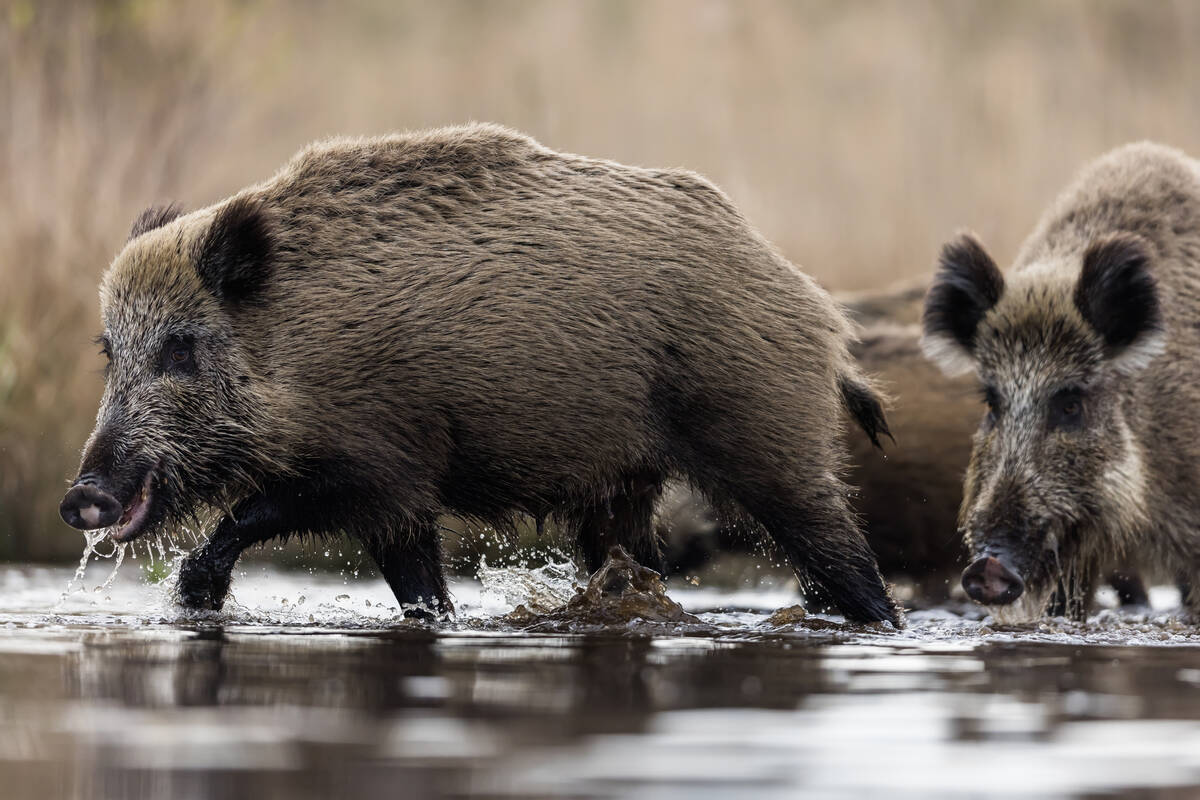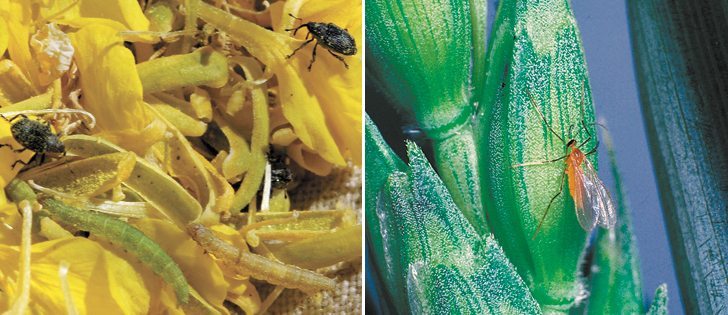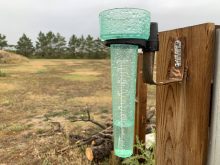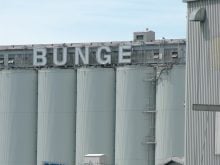This could be the year of the weevil for Alberta farmers.
Pea leaf weevil, cabbage seedpod weevil and alfalfa weevil all show signs of creating problems in the coming crop year.
Scott Meers, an insect expert with Alberta Agriculture, gave a summary of 2015 insect issues and an outlook for 2016 during the Irrigated Crop Production Update event in Lethbridge Jan. 19.
“I put pea leaf weevil first because it is the big gainer in 2015,” he said.
“We saw massive increases in numbers and range of this insect.”
Read Also

Manitoba bans wild boar possession
Manitoba has tightened the regulatory status of Eurasian wild boar in an effort to help fight back against invasive wild pigs.
Meers said surveys over the last several years show the northern range is expanding and now extends throughout southern Alberta and as far north as Red Deer.
The 2014 crop year was bad for pea leaf weevil, but numbers were fairly low last year, probably because of cool spring weather conditions.
Pea leaf weevil presence is determined by the notches they chew along the edges of leaves in affected crops, which include peas, fababeans and alfalfa.
Meers advised pea and fababean growers to use treated seed this year as the best way to limit weevil damage.
“If you’re in southern Alberta growing peas or fababeans, you should be using a seed treatment because there’s no real good way to get yield increase from doing a foliar application,” he said.
“The research is fairly consistent that … foliar applications and insecticide make you feel good because you kill a lot of insects but you don’t get your money back from doing it.”
He also said pea leaf weevil can damage seedling alfalfa, so growers of that crop should scout for it. Alfalfa can be sprayed for the weevil, but timing is critical to control.
Meers said extremely high numbers of cabbage seedpod weevil were found in southern Alberta last year, and he predicted most early canola fields would have to be sprayed for the pest this year.
Cabbage seedpod weevil was found north of Lacombe last year, so it also appears to be expanding its range.
As for alfalfa weevil, Meers said it is not one of the insects he and his team regularly monitor, but it is apparent that populations of this insect have increased in the last several years.
He believes it is connected to either high snowfall or mild winters, which allow them to survive the winter.
“We have been seeing alfalfa weevil to the point where now it’s starting to cause economic losses. We’re concerned about where that’s headed.”
Some parasites attack alfalfa weevil, but they haven’t been sufficient to control them.
As for other insect pests, Meers said grasshoppers are poised to be an issue in some regions of the province because a long, mild fall allowed the insect to lay lots of eggs.
Risk of wheat midge problems is low except perhaps in Lethbridge County, Cypress County, an area between Edmonton and Lloydminster and parts of the Peace region. Late seeding will increase risk of infestation.
Meers said wheat is most susceptible to wheat midge when the cereal head becomes visible, and it remains vulnerable until anthesis.
Parasites attack wheat midge, and their activity seems to be building.
Cereal leaf beetle is “definitely well established in southern Alberta,” said Meers. Parasitism is helping, but larval leaf feeding is a concern. One leaf beetle larvae per tiller is considered the threshold level for spraying, but the need for that is rare.
Meers said bertha armyworm is unlikely to be a problem in southern Alberta this year, and wheat stem sawfly is not a threat in irrigated crops.
Diamondback moth doesn’t overwinter, so its activity in the coming crop year can’t be predicted.
Meers and his team survey seven insect species a year, and forecast maps are now available online at bit.ly/1ParTzZ.
















